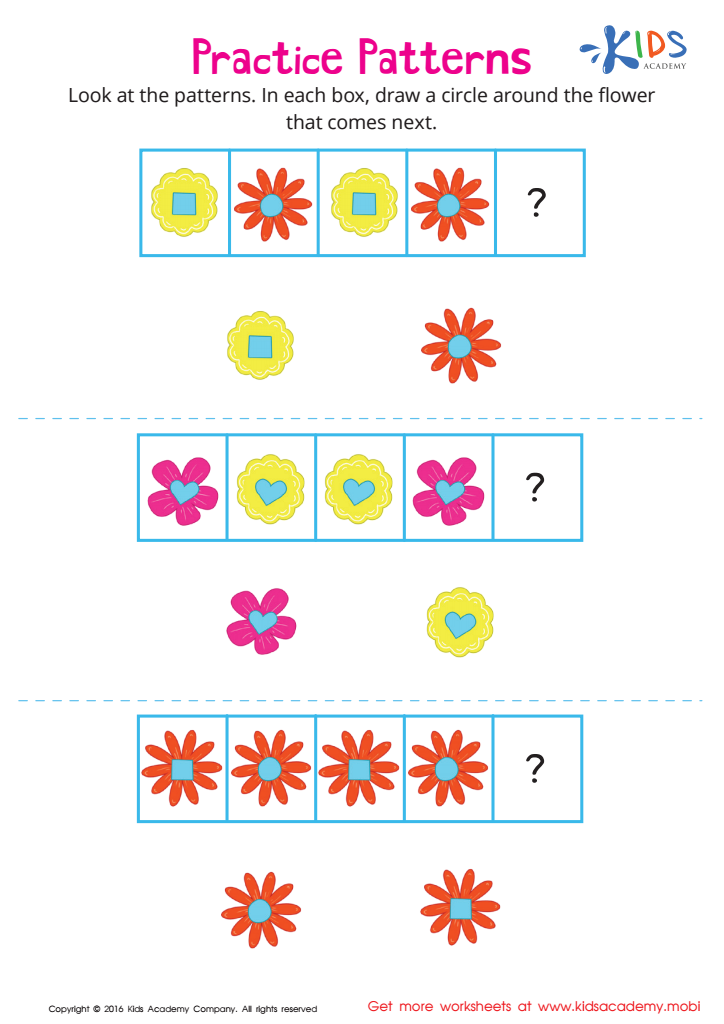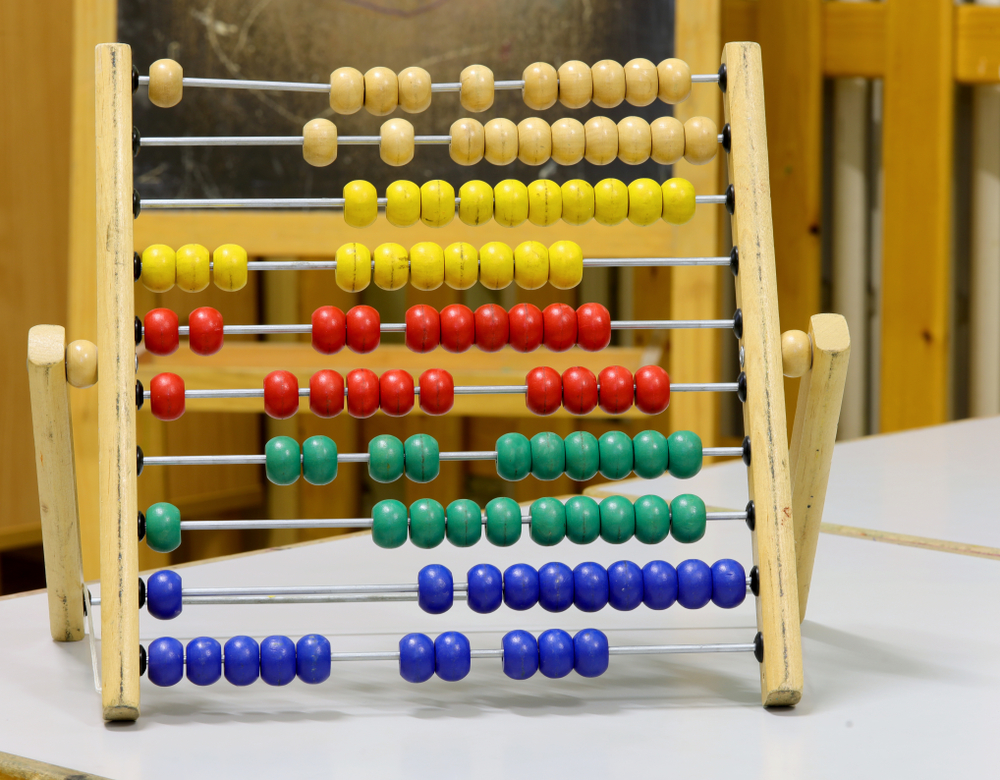Normal Patterns Worksheets for Ages 3-7
5 filtered results
-
From - To
Explore our delightful “Normal Patterns Worksheets for Ages 3-7,” designed to cultivate the foundational math skills young learners need. Featuring fun and engaging activities, these worksheets help children recognize, create, and predict patterns using familiar shapes, colors, and objects. Perfect for preschool, kindergarten, and early elementary students, these resources promote critical thinking and problem-solving in an interactive way. Available for free download, each worksheet is an exciting adventure that turns learning into play. Aiding cognitive development and enhancing early math abilities, our pattern worksheets are a valuable addition to your child’s educational journey.
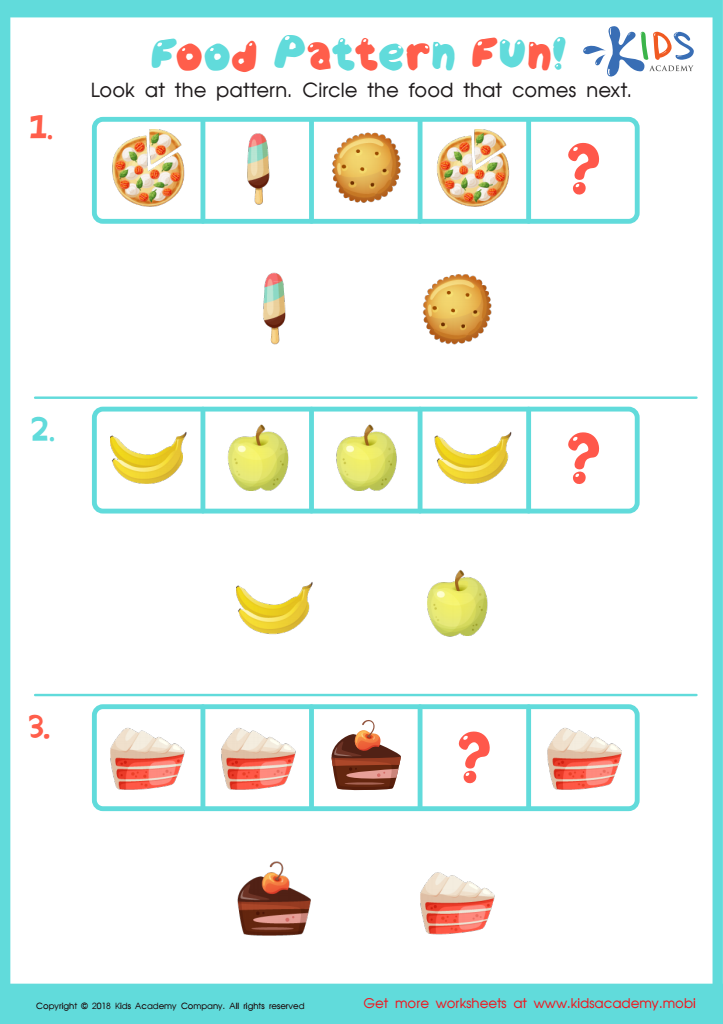

Food Pattern Fun Worksheet


Shape Pattern Fun Worksheet
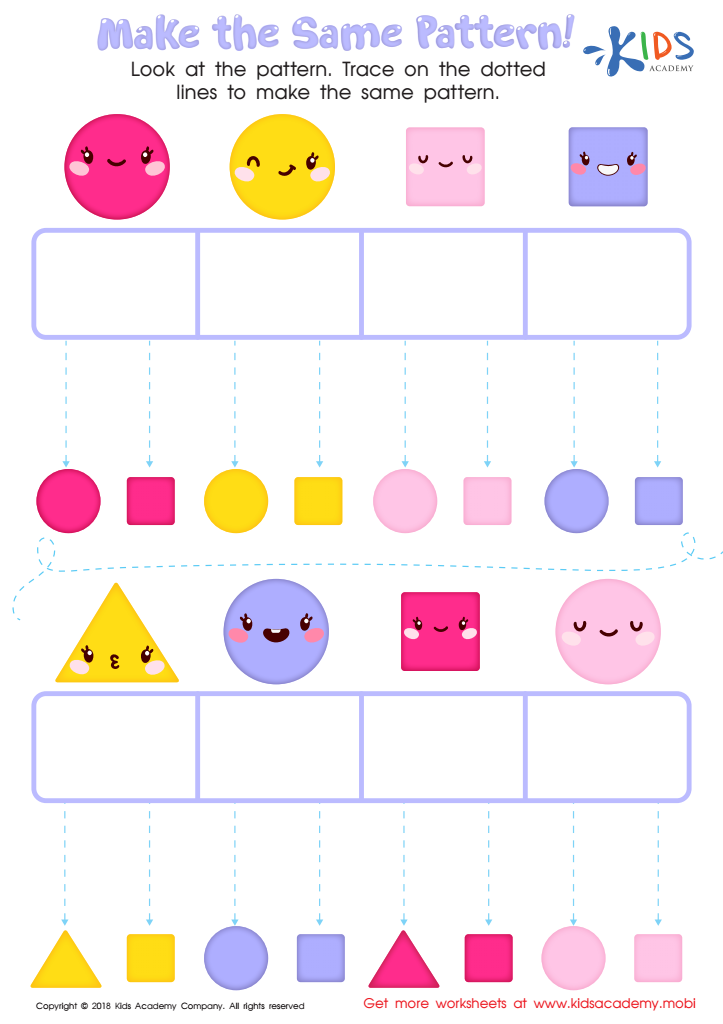

Make the Same Pattern Worksheet
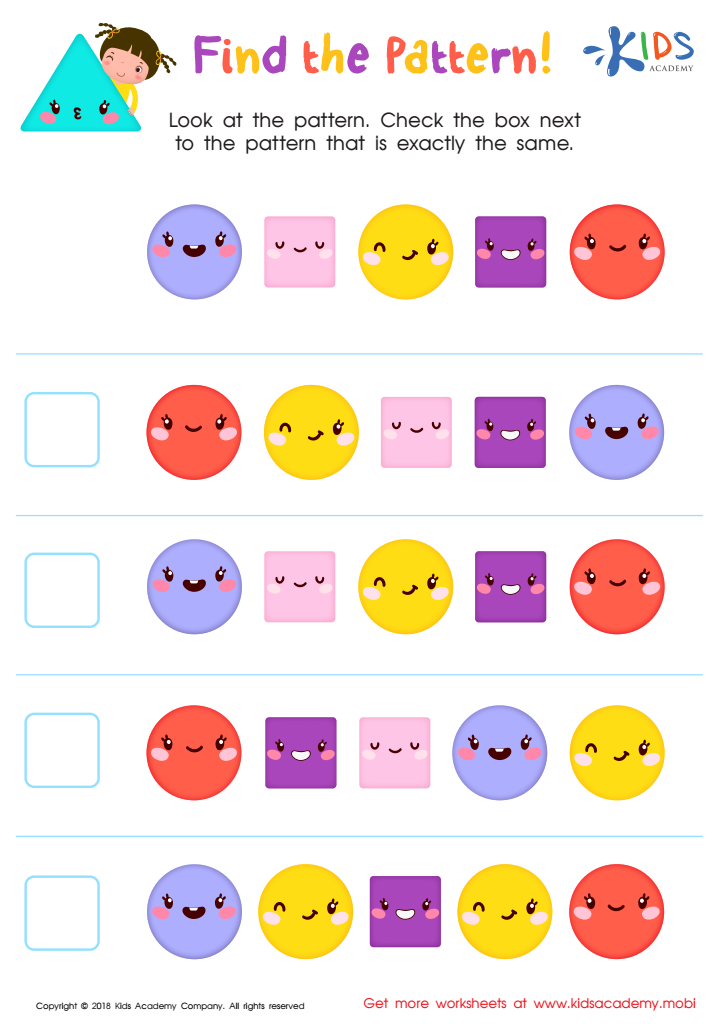

Find the Pattern Worksheet
Understanding normal developmental patterns for children ages 3-7 is crucial for parents and teachers as it allows them to recognize and support typical growth milestones, ensuring each child thrives socially, emotionally, and academically. Children in this age group experience rapid development in areas such as motor skills, language, cognitive processes, and social interactions. For instance, most 3-year-olds begin to engage in imaginative play, 4-year-olds develop better fine motor skills, like cutting with scissors, and by 7 years, many children start to read and write independently.
Paying attention to these patterns helps caregivers and educators identify if a child is falling behind or racing ahead, which may indicate the need for additional support or enrichment. Early identification of developmental delays and timely intervention can significantly improve outcomes and lessen future challenges. Moreover, understanding these norms allows adults to set realistic expectations and provide appropriate activities tailored to the child's developmental stage, which fosters confidence and a love for learning.
Furthermore, knowledge of typical behavior can alleviate unnecessary anxiety for parents or teachers, facilitating more effective, informed, and empathetic strategies to support the child's overall development. Thus, caring about these patterns creates a solid foundation upon which children can build future success and well-being.

 Assign to the classroom
Assign to the classroom
